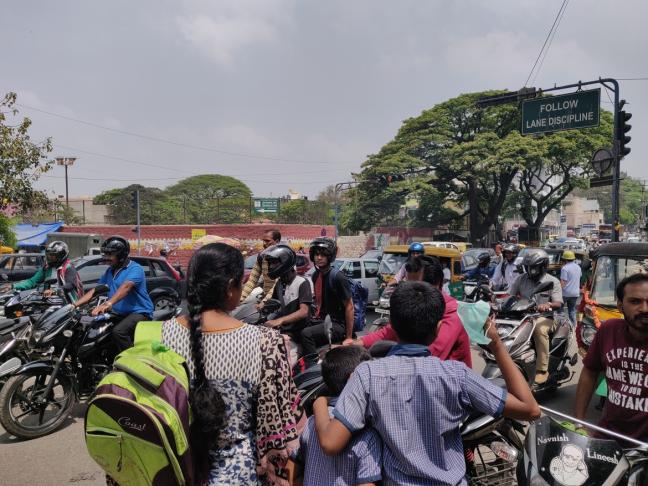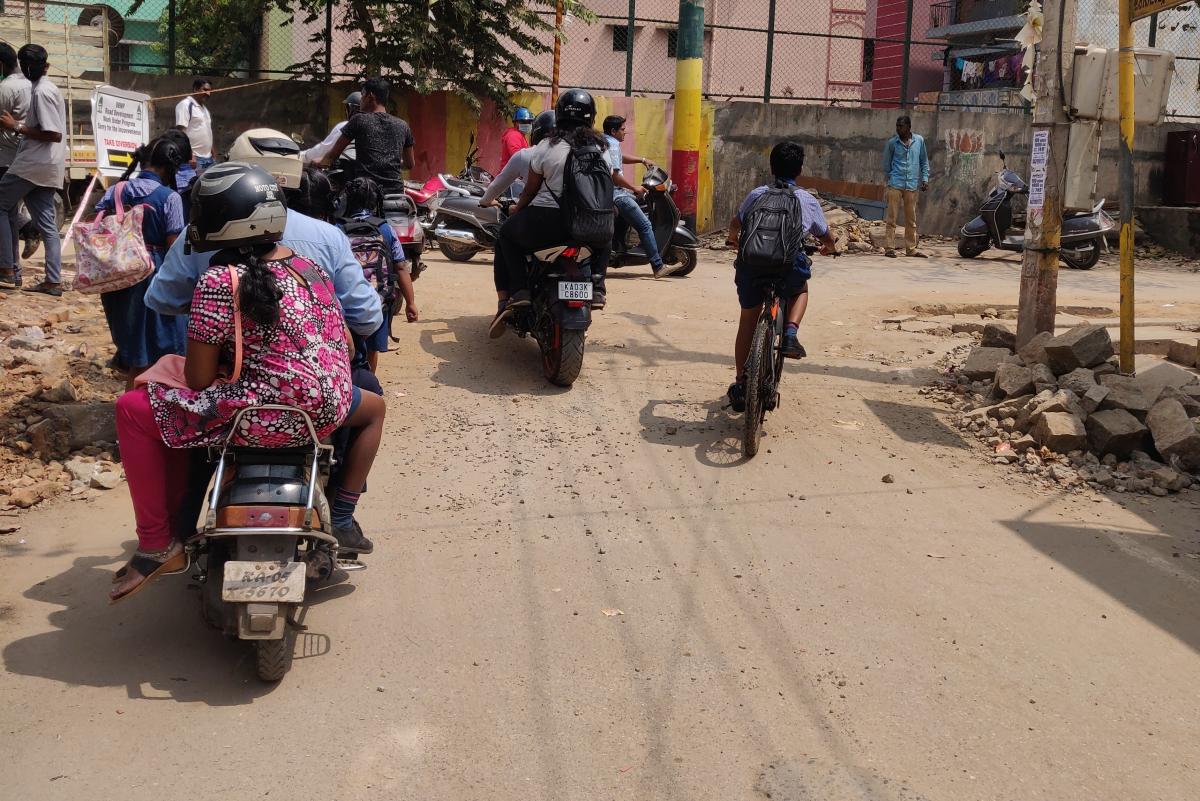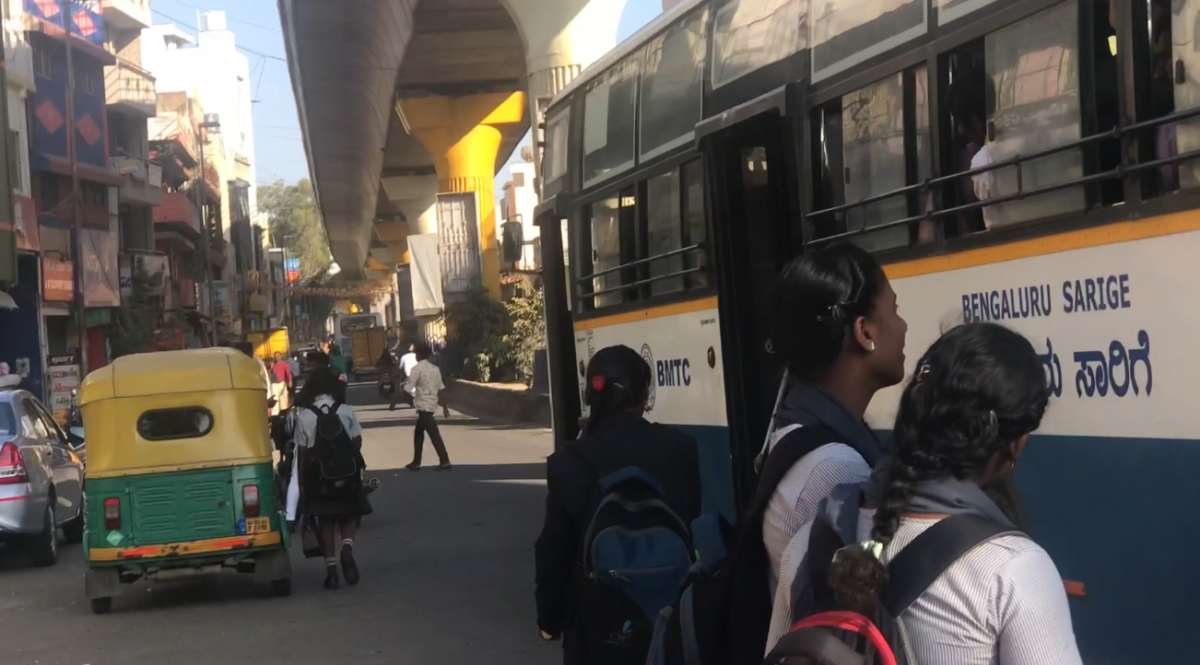Can school children return to safer streets after the pandemic?
by -
Article 21-A of the Constitution of India guarantees the right to elementary education for all children. But accessing this basic right comes at a cost for many children, who risk their lives daily as they travel to school. Road traffic injuries are the leading cause of injury-related deaths among children up to the age of 18 in India. A 2019 study by NIMHANS and Underwriters Laboratories in Bengaluru reported that 40% of child injuries happen on the road. In Hyderabad, a sixth of the children surveyed reported a road traffic injury during school journeys in the preceding 12 months. Urban transport systems have so far ignored the needs of children and require an urgent relook for the future.
The COVID-19 pandemic has pushed cities across the world to prioritize more sustainable modes of transport, such as walking and cycling. These measures can improve safety and quality of life for all including children. Cities globally have taken this as an opportunity to make school commutes safer for children.
As Indian cities start prioritizing walking and cycling, they should also consider this opportunity to make commutes safer for millions of children accessing schools everyday. Currently, governments and school administrations are focused on how to seamlessly educate children through the pandemic. When the impact of the pandemic wanes, children will eventually return back to schools. We should seriously consider how our streets can be made safer and healthier for children when they return.
Given that many parents are apprehensive about shared modes of transport, safe, sustainable, and feasible alternatives should be thought of and provided immediately for school commute. Failing this, our cities will see a surge in private vehicle use for school journeys with devastating impacts on safety, public health, and quality of life.
In this scenario, here are a few recommendations on how to make streets safer and healthier:
Enabling walking and cycling around schools
Studies on school commutes in Hyderabad and Bengaluru show that about 90% of children live within 5km of the school. In Hyderabad about 57% of children walk and about 6% cycle, while in Bengaluru about 59% walk and 1.5% cycle to school. Due to lack of proper walking and cycling infrastructure, these children are most vulnerable on streets. A recent report by NIMHANS has indicated that hospital-based injury data studied during 2007 and 2010 in Bangalore points to high vulnerability of child pedestrians and cyclists on the road. 51% of road traffic fatalities involving children under 18 years are reported among pedestrians and 11% among cyclists.
Enabling walking and cycling for school journeys can have significant public health and environmental benefits for the city. Good quality footpaths, bicycle lanes, safe and frequent crossings, and traffic calming measures are a few important ways in which more children can be invited to use these modes. To begin with, infrastructure needs to be provided in walking zones around schools and on paths from transit stations, such as bus stops and metro stations, to schools.
Some global cities are already thinking along these lines and offer good examples. Amsterdam is making 1,600 bikes available for students without bikes, while Brussels is promoting ‘bike to school’ incentives.

Making public transport an attractive option
In Bengaluru and Mumbai, studies indicate that about 23% of school trips by children are made using public buses. While bus journeys are relatively safer, the walk to and from the bus stop and waiting at the bus stop can be highly unsafe. A workshop conducted by WRI India this March, in collaboration with Underwriters Laboratories, (a public safety organization) with 50 school students in Ulsoor, Bengaluru, revealed that children feel highly unsafe waiting at bus stops. Bus stops in the neighborhood surveyed were poorly designed and lacked shelter.
Improving transit facilities near schools and improving pedestrian infrastructure in catchment areas can significantly improve school journeys for children using public transport and encourage more children to use it. Bus stops around schools should be clearly designated and well-designed with safe and comfortable waiting spaces, bus shelters, and a bus bay. Transit schedules and routes can be rationalized to better cater to children traveling during school hours. In the current scenario, public buses can also be financially supported to operate with higher frequencies and sanitization measures along high-density school routes.

Sustaining shared modes of transport
School buses and other shared modes of transport are one of the safest means of transport for school children as they offer flexibility with pick-up and drop-off locations, limiting first- and last-mile journeys. Bengaluru alone has 13,549 buses registered for educational institutions. While some are owned by schools themselves, many of these buses are operated by private contractors.
It is important to ensure that school buses sustain and continue to cater to longer commutes that are not feasible through walking or cycling. Without school buses, private vehicle usage will surge. When schools reopen, the need for social distancing and sanitization measures can impact school bus operators and bus viability. Many operators have already raised concerns about job losses due to the ongoing pandemic. Understanding the financial implications on school bus operators and offering them support to continue services is crucial for their sustenance.
Starting ‘School Streets’ in residential areas
Schools Streets are streets adjoining schools that are temporarily closed for motorized traffic during school drop-off and pick-up times. Such streets are a simple way of prioritizing safety, health, and well-being of children above motorized traffic, and have seen a renewed focus in London and some European cities. They have multiple advantages for children: enabling walking and cycling, limiting traffic speeds, reducing congestion, and air pollution. Since the pandemic, their relevance has increased as they help regulate activity near the school gates, increase public space available to children, and maintain social distancing.
School Streets can be tested for schools located in residential neighborhoods that see low-volume traffic. These can be championed by the neighborhood or schools and can be supported with approvals from the traffic police and the municipal corporation.
Every day, millions of school trips are made by children in our cities. How these trips are made, and the quality of these trips both have significant impacts on public health and the environment. Prioritizing walking, cycling, and public transit around schools can unlock multiple cascading benefits for cities. This opportunity should not be wasted or delayed.
These are the author’s personal views.


